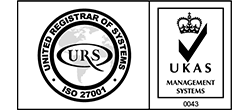
Cybersecurity Best Practices for Remote Workers
In today’s ever-evolving digital landscape, the concept of remote work has become a cornerstone of modern business operations. As organisations worldwide embrace this flexible work arrangement, the need to prioritise cybersecurity has never been more crucial. The proliferation of remote work has opened new avenues for cyber threats, making it imperative for businesses to implement robust cybersecurity best practices to protect sensitive data and maintain the integrity of their operations.
The Remote Work Revolution: Navigating the New Normal
The global workforce has undergone a significant transformation in recent years, with remote work emerging as a revolutionary trend that shows no signs of slowing down. The COVID-19 pandemic acted as an unexpected catalyst, accelerating the adoption of remote work practices across industries. While remote work offers undeniable advantages in terms of flexibility and access to a broader talent pool, it also presents a set of unique challenges that office managers and CEOs must address to ensure the sustained success of their organisations.
Understanding the Impact
The remote work revolution has had a profound impact on the way businesses operate, ushering in an era of unparalleled flexibility and adaptability. With employees no longer tethered to physical office spaces, companies have the opportunity to tap into a global workforce, breaking down geographical barriers and reimagining the traditional 9-to-5 workday.
A Unique Tip: Embrace “Asynchronous Communication”
In the realm of remote work, asynchronous communication is a powerful strategy that can boost productivity and work-life balance. Instead of requiring employees to be online and available in real-time, embrace asynchronous communication by allowing team members to respond to messages and tasks at their own pace. This approach minimizes interruptions, reduces stress, and empowers employees to manage their time more effectively.
Navigating the Challenges
While the benefits of remote work are undeniable, it’s essential for office managers and CEOs to recognize and address the unique challenges that come with this new paradigm. Here are some of the key challenges and tips on how to overcome them:
1. Maintaining Team Cohesion
Remote work can sometimes lead to feelings of isolation among employees. To combat this, consider organizing virtual team-building activities, weekly check-in meetings, and collaboration tools like Slack or Microsoft Teams to foster a sense of camaraderie.
2. Ensuring Data Security
With employees working from various locations, data security becomes paramount. Implement robust cybersecurity measures, as discussed earlier in this article, to protect sensitive company data. For more in-depth guidance, you can refer to resources like Cybersecurity and Remote Work: Best Practices.
3. Monitoring Productivity
While remote work offers flexibility, it can also raise concerns about employee productivity. Consider using productivity tracking tools like Toggl or Time Doctor to monitor work hours and identify areas for improvement.
4. Providing Ergonomic Support
Remote workers may not have access to ergonomic office setups. Encourage employees to create ergonomic home workspaces and consider offering stipends for ergonomic equipment. Resources like Creating an Ergonomic Home Office can provide valuable insights.
5. Managing Time Zones
If your remote team spans multiple time zones, it’s crucial to establish clear expectations regarding working hours and availability. Tools like World Time Buddy can help coordinate meetings and deadlines across time zones.
Understanding Cybersecurity in the Remote Work Environment
To effectively protect your business from cyber threats in a remote work environment, it is essential to comprehend the unique challenges and vulnerabilities that this mode of operation presents. Below, we delve into some key aspects of cybersecurity best practices for remote workers:
1. Secure Your Home Network
The first line of defence in a remote work setup is your home network. Ensure that your Wi-Fi network is protected with a strong, unique password. Consider enabling WPA3 encryption for an added layer of security. Regularly update your router’s firmware to patch any vulnerabilities.
2. Implement Multi-Factor Authentication (MFA)
Multi-factor authentication (MFA) is a vital cybersecurity measure that adds an extra layer of security to your accounts. By requiring multiple forms of verification, such as a password and a fingerprint or a one-time code, MFA makes it significantly harder for cybercriminals to gain unauthorized access to your accounts.
3. Use a Virtual Private Network (VPN)
A VPN is an indispensable tool for remote workers. It encrypts your internet connection, making it extremely challenging for hackers to intercept your data. Always connect to a trusted VPN service before accessing sensitive company resources or conducting business-related activities online.
4. Keep Software and Systems Updated
Regularly updating your operating system, applications, and security software is a fundamental cybersecurity practice. These updates often contain critical security patches that address known vulnerabilities. Failing to update your software can leave you exposed to exploitation by cybercriminals.
5. Educate and Train Remote Workers
Human error remains one of the leading causes of security breaches. Provide comprehensive cybersecurity training to your remote workforce to help them recognize phishing attempts, suspicious emails, and other common cyber threats. Encourage them to report any security concerns promptly.
6. Secure Your Devices
Whether you use a company-issued laptop or your personal computer for remote work, it is essential to secure your devices. Enable device encryption, use strong passwords, and consider installing antivirus software to protect against malware and other threats.
7. Monitor Network Traffic
Implement network monitoring tools to keep an eye on network traffic, detect anomalies, and respond swiftly to potential security incidents. Continuous monitoring can help identify and mitigate threats before they escalate.
8. Establish a Cybersecurity Policy
A well-defined cybersecurity policy is the foundation of a secure remote work environment. Your policy should outline acceptable use guidelines, password policies, data encryption requirements, and incident response procedures. Ensure that all remote workers are familiar with and adhere to this policy.
9. Conduct Regular Security Audits
Regular security audits and vulnerability assessments are essential to evaluate the effectiveness of your cybersecurity measures. Identify weaknesses, address them promptly, and continuously improve your security posture.
10. Collaborate with Cybersecurity Experts
Consider partnering with cybersecurity experts or firms to conduct penetration testing and assess your organization’s overall cybersecurity readiness. These professionals can provide valuable insights and recommendations to bolster your defences.
A Secure Future for Remote Work
As remote work continues to reshape the modern workplace, cybersecurity must remain a top priority for businesses. By implementing the best practices outlined above, organizations can protect their remote workforce, secure sensitive data, and maintain the trust of their customers and partners. Remember, cybersecurity is an ongoing effort that requires vigilance and adaptability. Stay informed about the latest threats and technologies to stay one step ahead of cybercriminals.
Resources
UK Government guidelines on cyber security for home working: https://www.ncsc.gov.uk/guidance/home-working
London Cyber Security Centre resources for businesses: https://www.londoncyber.tech/resources/
UK National Cyber Security Centre’s Small Business Guide: https://www.ncsc.gov.uk/smallbusiness
Information Commissioner’s Office data protection guidance for remote working: https://ico.org.uk/for-organisations/working-from-home/
Cyber Essentials certification for UK businesses: https://www.cyberessentials.ncsc.gov.uk/
UK Cyber Security Association’s tips for securing home networks: https://ukcybersecurityassociation.co.uk/how-to-secure-your-home-network/
London Digital Security Centre workshops and events: https://digitalsecuritycentre.com/events/
UK Government’s Cyber Aware campaign for individuals and small businesses: https://www.ncsc.gov.uk/cyberaware
Institute of Directors guidance on cyber security for directors: https://www.iod.com/news/news/articles/Cyber-security-guidance-for-directors


















Recent Comments